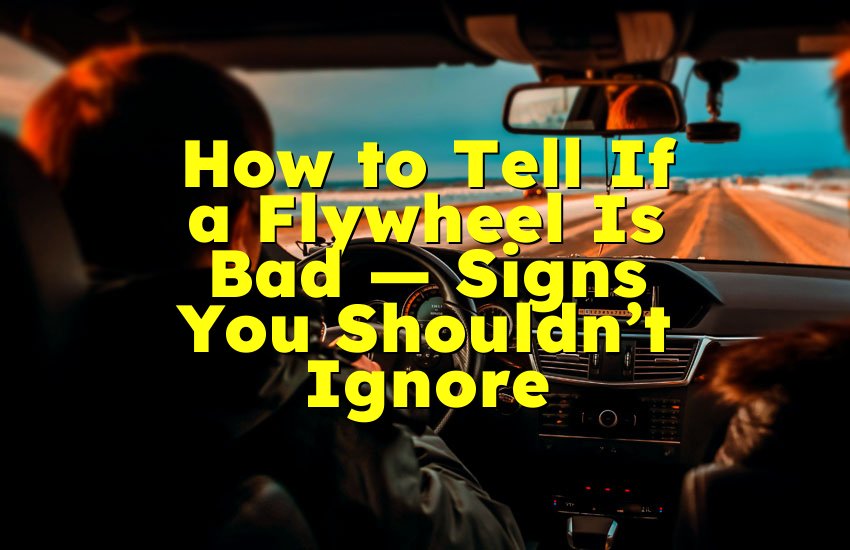As an Amazon Associate, I earn from qualifying purchases at no extra cost to you.
What Does Low Oil Pressure Light Mean? Find Out Now!
Have you ever been driving and suddenly saw the low oil pressure light come on? It can be very scary because it means something is wrong with your car's engine. When this light turns on, it tells you the oil in your engine isn't working properly to keep things running smooth. In this article, I will explain exactly what this light means, why it happens, and what you should do if you see it. By the end, you will understand this warning and know how to keep your car safe.
Why the Low Oil Pressure Light Comes On
The low oil pressure light is a warning signal on your dashboard. It comes on when your car's engine does not have enough oil pressure. Oil pressure is very important because it pushes the oil through the engine parts. This oil keeps the engine parts cool and stops them from rubbing together and breaking.
When the pressure is too low, it means the oil is not moving fast or strong enough to do its job. This can happen because the oil is dirty, the oil pump is broken, or the oil level is very low. Sometimes, there could be a problem with the sensor that tells the light when to turn on.
If you ignore this light, it can cause serious damage to your engine. The parts can get too hot and wear out fast. This can lead to expensive repairs or even a broken engine. So, it's very important to pay attention when this light comes on.
- Low oil pressure means oil is not flowing properly inside the engine.
- It can be caused by dirty or low oil, or a broken oil pump.
- The light warns you to check the engine quickly.
- Ignoring the light can damage the engine.
- The sensor might also be the problem.
How to Check Oil Level and Condition
When the low oil pressure light comes on, the first thing you should do is check your car's oil. This is easy to do and can save your engine from serious damage.
Start by parking your car on a flat surface and turning off the engine. Wait a few minutes to let the oil settle inside the engine. Then, open the car hood and find the oil dipstick. This is usually a long metal stick with a bright handle.
Pull the dipstick out, wipe it clean with a cloth, then put it back in all the way. Pull it out again and look at the oil level. There should be marks showing the minimum and maximum oil levels. If the oil is below the minimum mark, you need to add oil.
Also, look at the oil color. Fresh oil is usually amber or light brown. If it looks very dark, black, or has particles, it means the oil is dirty and needs to be changed.
Adding oil is simple, but use the type your car manual recommends. Never put too much oil because that can also cause problems.
- Park on flat ground and turn off engine.
- Pull out and clean the dipstick to check oil level.
- Oil below minimum means add oil soon.
- Check oil color; dark or dirty oil needs a change.
- Use the correct oil type for your car.
- Do not overfill the oil.
Why Low Oil Pressure Can Be Dangerous
Low oil pressure is not just a small problem; it can be very dangerous for your car's engine. The oil inside the engine acts like a shield, stopping metal parts from rubbing against each other. It also takes away heat from the engine parts, helping to cool them down.
If the oil pressure is low, the oil can't flow properly. This means the engine parts start to rub and heat up. When metal parts rub without enough oil, they wear down quickly or even break. This can cause the engine to seize, which means it stops working completely.
Repairing an engine with low oil pressure damage can cost thousands of dollars. Sometimes, the damage is so bad that the whole engine needs to be replaced.
If the low oil pressure light comes on, don't ignore it. Turn off your car and check the oil. If you are not sure or if the light stays on, take your car to a mechanic right away.
- Oil keeps engine parts cool and protected.
- Low oil pressure means oil can't flow well.
- Engine parts rub and heat up without oil.
- This causes fast wear or engine failure.
- Repairs can be very expensive.
- Always act quickly when the light is on.
Common Reasons for Low Oil Pressure Light
Many things can cause the low oil pressure light to come on. Some problems are easy to fix, while others need a mechanic's help.
One common cause is low oil level. If your car has a leak or you forgot to add oil, the level drops and the pressure goes down. Another reason is dirty oil. When oil gets old, it becomes thick or full of dirt, which can block the flow.
The oil pump is the part that moves the oil through the engine. If it breaks or gets weak, it can't push oil properly. This will make the light come on.
Sometimes, the oil pressure sensor itself breaks or gets dirty, causing the light to come on even if there is no problem.
Also, if the engine is very hot or if the car is running at very low RPMs (like idling for a long time), the oil pressure might drop and trigger the light.
- Low oil level from leaks or no oil added.
- Dirty or old oil blocking oil flow.
- Broken or weak oil pump.
- Faulty oil pressure sensor.
- Engine running hot or low RPMs.
What to Do If the Light Comes On While Driving
If you are driving and see the low oil pressure light, don't panic but take it seriously. The best thing to do is stop driving as soon as it is safe.
First, find a safe place to pull over and turn off the engine. Running the engine with low oil pressure can cause very bad damage. Once stopped, wait a few minutes and check the oil level with the dipstick.
If the oil level is okay, but the light is still on, it could be a sensor or pump problem. It's better not to drive the car and call for help or tow it to a mechanic.
If the oil level is low, add the right oil and see if the light goes off. If it does not, do not keep driving. Have the car checked.
If you cannot check the oil yourself, call a mechanic or roadside service.
- Stop driving and pull over safely.
- Turn off the engine immediately.
- Check oil level with dipstick.
- Add oil if it is low.
- If light stays on, do not drive further.
- Call for help or tow to mechanic.
How to Prevent Low Oil Pressure Problems
The best way to avoid seeing the low oil pressure light is by taking care of your car's oil regularly.
Change your oil and oil filter as recommended in your car's manual. Usually, this is every 3,000 to 7,000 miles, depending on your car and oil type. Using clean oil keeps the engine healthy and oil flowing well.
Check your oil level once a month or before long trips. If you see the oil is low, add some before it becomes a big problem.
Make sure you fix any leaks quickly. Oil leaks reduce the oil level and can damage your engine.
Also, have your car checked by a mechanic regularly. They can find and fix small problems like a weak oil pump or sensor before they cause trouble.
- Change oil and filter on time.
- Check oil level often.
- Fix oil leaks fast.
- Use the right oil for your car.
- Get regular mechanic checkups.
- Take care of small problems early.
Understanding the Oil Pressure Sensor and Its Role
The oil pressure sensor is a small but very important part of your car. It watches the oil pressure inside the engine and tells the dashboard light when to turn on.
If the sensor works well, it helps you know if there is a problem with your oil system. But sometimes, the sensor itself can fail. It might send the wrong signal and turn the light on even when there is no issue with the oil pressure.
A faulty sensor can confuse you and make you worry unnecessarily. Or, worse, it might not alert you when there really is a problem.
If you suspect the sensor is bad, a mechanic can test it. They can replace it if needed. This is usually a cheaper fix than repairing engine damage.
Remember, the sensor plays a key role in keeping your engine safe by warning you early about oil pressure problems.
- Sensor watches engine oil pressure.
- It turns on the low oil pressure light.
- Faulty sensor can cause false warnings.
- A bad sensor might miss real problems.
- Mechanics can test and replace sensors.
- Sensor helps protect your engine.
Final Thoughts
Seeing the low oil pressure light on your dashboard can be scary, but knowing what it means helps you stay calm and act right. It tells you that your engine's oil is not working well, and you should check the oil level and quality first. Ignoring this warning can cause serious engine damage and expensive repairs. By checking your oil often, changing it regularly, and fixing leaks fast, you can avoid this problem. If the light stays on, stop driving and get your car checked. Your engine will thank you for the care.
| What to Do | Why It Matters |
|---|---|
| Check oil level and color | Oil keeps engine parts safe and cool |
| Add oil if low | Low oil causes low pressure |
| Stop driving if light stays on | Prevents engine damage |
| Change oil regularly | Keeps oil clean and flowing well |
| Fix leaks quickly | Maintains oil level |
| Get mechanic checkups | Finds problems early |
Frequently Asked Questions (FAQs)
Is it safe to drive with the low oil pressure light on?
It is not safe to drive when the low oil pressure light is on. This light means your engine is not getting enough oil pressure to protect the parts inside. Driving with low oil pressure can cause serious damage to your engine, making it overheat or parts wear out quickly. If you see the light, stop the car as soon as it is safe and check the oil level. If the oil is fine but the light stays on, it is best to call a mechanic or get the car towed. Driving without fixing the problem could cost you a lot in repairs.
Can low oil pressure damage my engine quickly?
Yes, low oil pressure can damage your engine very quickly. The oil keeps engine parts from rubbing and overheating. Without enough pressure, parts can scrape against each other and heat up fast. This causes them to wear down or even break in a short time. If the problem is not fixed fast, it can lead to engine failure. This is why the low oil pressure light is very important. It gives you early warning so you can act before serious damage happens.
Do I need to change my oil if the low oil pressure light comes on?
If the light comes on, you should check your oil. Sometimes, the oil is old or dirty, and changing it can fix the problem. Dirty oil doesn't flow well and can lower oil pressure. However, the light can also come on if the oil level is low or if there is a problem with the oil pump or sensor. So, changing the oil is a good first step, but if the light stays on, you need to get your car checked by a mechanic.
Is it normal for the low oil pressure light to come on when idling?
Sometimes, the light may come on when the car is idling for a long time, especially if the engine is hot. This happens because the oil pressure can drop at low engine speeds. However, if the light stays on or comes on often, it is not normal and means there might be a problem. In that case, you should check the oil level and have a mechanic look at your car. Don't ignore the warning, even if it only happens at idle.
Can a faulty oil pressure sensor cause the light to turn on?
Yes, a bad oil pressure sensor can cause the low oil pressure light to come on even if the oil pressure is fine. The sensor sends signals to the dashboard light, so if it breaks or gets dirty, it can give a false warning. If you check your oil and everything seems okay, but the light stays on, the sensor might be the problem. A mechanic can test the sensor and replace it if needed. This fix is usually less expensive than engine repairs.
Do I need special tools to check my oil pressure?
No, you do not need special tools to check your oil pressure light or oil level. You can check the oil level yourself using the dipstick inside the engine. It is simple and only takes a few minutes. However, to measure the exact oil pressure, a mechanic uses special tools. If the light stays on after you check the oil, it's best to have a professional check your car.
Can low oil pressure cause the engine to overheat?
Yes, low oil pressure can cause the engine to overheat. Oil helps cool the engine by moving heat away from the metal parts. Without enough oil pressure, the oil doesn't flow well, and parts rub and heat up more than normal. This extra heat can cause the engine to overheat, which can damage parts and cause the car to stop working. If you see the low oil pressure light, check the oil quickly to avoid overheating.
Is it possible to fix low oil pressure problems myself?
Some low oil pressure problems you can fix yourself, like adding oil if it is low or changing dirty oil. Checking the oil level and color is simple and can be done at home. But other problems, like a broken oil pump or bad sensor, need a mechanic's help. These parts are inside the engine and require special skills to fix. If you are not sure, it's safer to get help than risk more damage.











